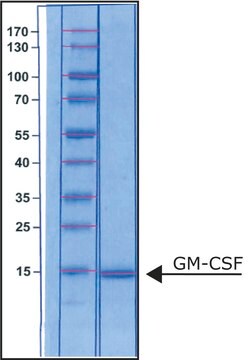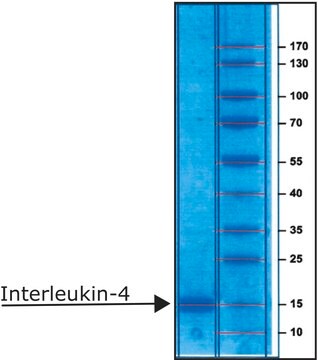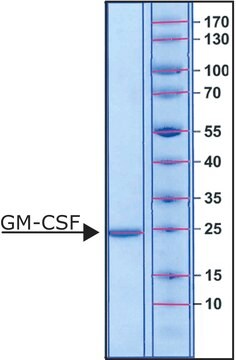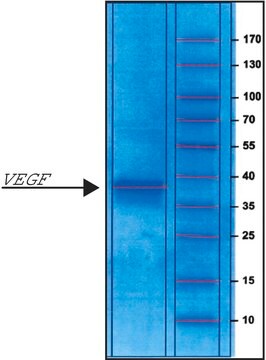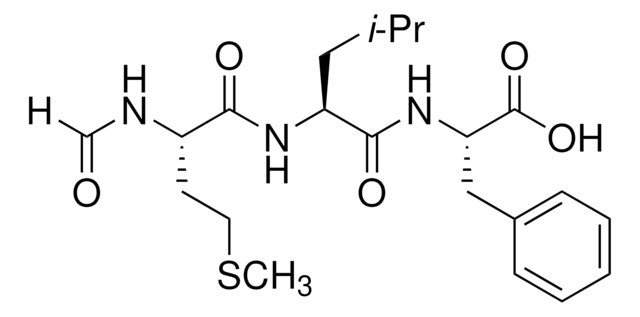G0407
Granulocyte colony-stimulating factor human
≥95% (SDS-PAGE), recombinant, expressed in E. coli, lyophilized powder, suitable for cell culture
About This Item
Produtos recomendados
product name
Granulocyte colony-stimulating factor human, G-CSF, recombinant, expressed in E. coli, suitable for cell culture
fonte biológica
human
Nível de qualidade
recombinante
expressed in E. coli
Ensaio
≥95% (SDS-PAGE)
forma
lyophilized powder
potência
0.01-0.1 ng/mL
qualidade
endotoxin tested
peso molecular
18.8 kDa (175 amino acids including N-terminal methionine)
embalagem
pkg of 5 and 25 μg
técnica(s)
cell culture | mammalian: suitable
Impurezas
<1 EU/μg (LAL test)
nº de adesão UniProt
temperatura de armazenamento
−20°C
Informações sobre genes
human ... CSF3(1440)
Procurando produtos similares? Visita Guia de comparação de produtos
Descrição geral
Aplicação
- in culturing human neutrophils
- as a growth factor component of double layer granulocyte-macrophage colony-forming unit (CFU-GM) culture system for CD34+ cells
- to test its protective effects chronic liver damage model
Ações bioquímicas/fisiológicas
forma física
Nota de análise
produto relacionado
Código de classe de armazenamento
11 - Combustible Solids
Classe de risco de água (WGK)
WGK 3
Ponto de fulgor (°F)
Not applicable
Ponto de fulgor (°C)
Not applicable
Equipamento de proteção individual
Eyeshields, Gloves, type N95 (US)
Certificados de análise (COA)
Busque Certificados de análise (COA) digitando o Número do Lote do produto. Os números de lote e remessa podem ser encontrados no rótulo de um produto após a palavra “Lot” ou “Batch”.
Já possui este produto?
Encontre a documentação dos produtos que você adquiriu recentemente na biblioteca de documentos.
Os clientes também visualizaram
Artigos
Read article on hematopoietic cytokines and hematopoiesis
Nossa equipe de cientistas tem experiência em todas as áreas de pesquisa, incluindo Life Sciences, ciência de materiais, síntese química, cromatografia, química analítica e muitas outras.
Entre em contato com a assistência técnica